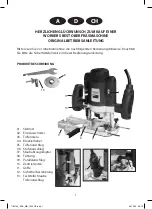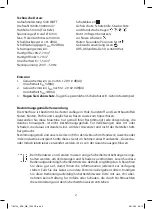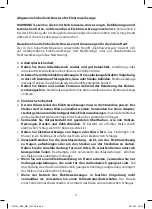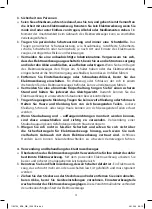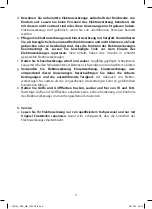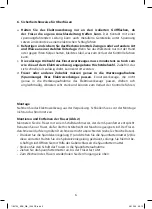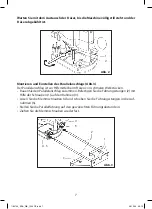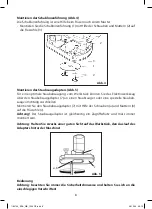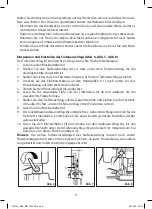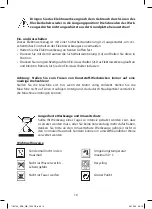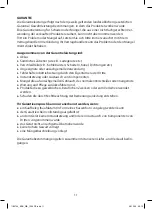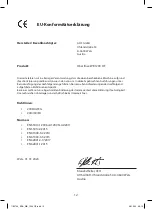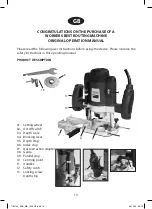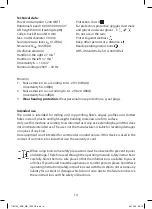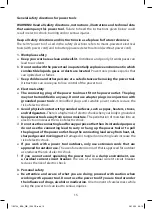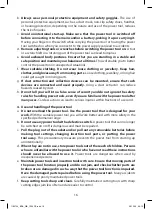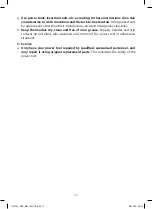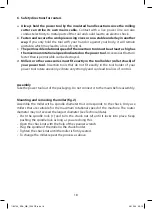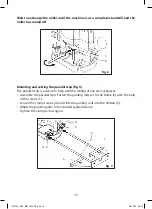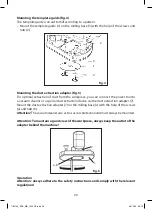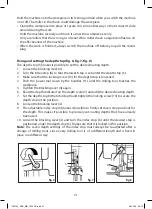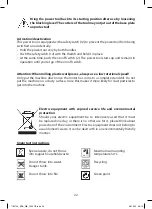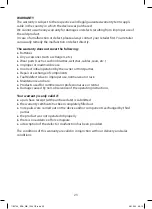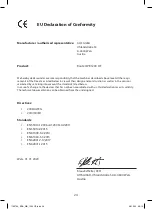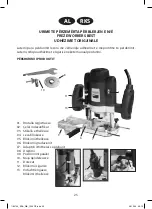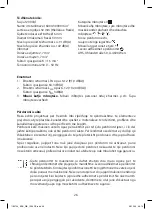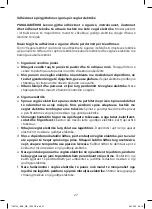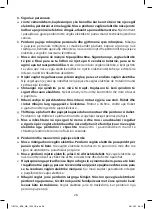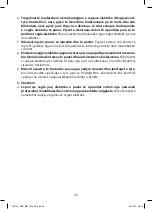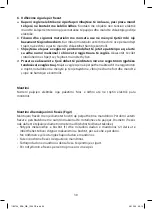
15
General safety directions for power tools
WARNING! Read all safety directions, instructions, illustrations and technical data
that accompany this power tool. Failure to heed the instructions given below could
result in electric shock, burning and/or serious injuries.
Keep all safety directions and instructions in a safe place for future reference.
The term “power tool” used in the safety directions refers to mains-powered electrical
tools (with power cord) and to battery-powered electrical tools (without power cord).
1. Workplace safety
a. Keep your work area clean and welllit. Untidiness and poorly lit workspaces can
lead to accidents.
b. Do not work with the power tool in a potentially explosive environment in which
combustible liquids, gases or dusts are located. Power tools produce sparks that
can ignite dust or fumes.
c. Keep children and other persons at a safe distance when using the power tool.
Distractions can cause you to lose control of the power tool.
2. Electrical safety
a. The connecting plug of the power tool must fit in the power outlet. The plug
may not be modified in any way. Do not use adapter plugs in conjunction with
grounded power tools. Unmodified plugs and suitable power outlets reduce the
risk of electric shock.
b. Avoid physical contact with grounded surfaces, such as pipes, heaters, stoves,
and refrigerators. There is a higher risk of electric shock when your body is grounded.
c. Keep power tools away from rain or moisture. The penetration of moisture into an
electric tool increases the risk of electric shock.
d. Do not use the connecting lead for any purpose other than its intended purpose;
do not use the connecting lead to carry or hang up the power tool or to pull
the plug out of the power outlet. Keep the connecting lead away from heat, oil,
sharp edges and moving parts. Damaged or tangled connecting leads increase the
risk of electric shock.
e. If you work with a power tool outdoors, only use extension cords that are
approved for outdoor use. The use of an extension cord that is approved for outdoor
use reduces the risk of electric shock.
f. If you cannot avoid operating the power tool in a damp environment, use
a residual current circuit breaker. The use of a residual current circuit breaker
reduces the risk of electric shock.
3. Personal safety
a. Be attentive and aware of what you are doing; proceed with caution when
working with a power tool. Do not use the power tool if you are tired or under
the influence of drugs, alcohol or medication. One moment of carelessness while
using the power tool can lead to serious injuries.
1192734_BDA_WB_1200 OF.indd 15
1192734_BDA_WB_1200 OF.indd 15
28.12.20 09:13
28.12.20 09:13

